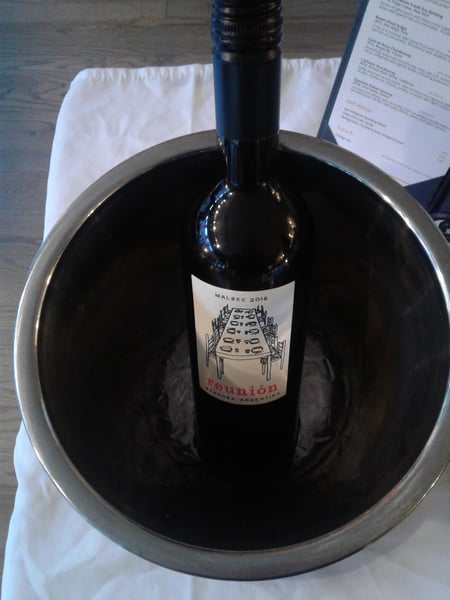Since getting into wine, one of my favorite experiments is to list all the factors I can think of from grape to glass that can influence a wine's flavor. Generally, I can't make it past soil before being overwhelmed by the endless possibilities. At that point, mindgasm achieved, I can move on to the serious business of enjoying my glass of wine, but it occurred to me recently that I'm looking at this the wrong way.
Yeah, it's fun to imagine frolicking through vineyards in the French countryside, plucking grapes off the vine, but by the time the bottle has reached my table every flavor-influencing factor from that side of the process has long been decided. The only control I have over my wine is how it’s served, but how much does service influence flavor?
Much like the production side of wine, there are innumerable factors that can spoil the experience on the service side. One, hopefully obvious, example would be to imagine the difference between enjoying your glass as a fresh summer breeze rolls through an open window and then compare that to trying to enjoy the same glass downwind from a neglected litter box. That’s an extreme example, but you see the point; all the hard work that goes into making that bottle you love can be completely negated by improper service. Putting aside rogue odors and unpleasant environments, I’d like to focus on something more subtle: temperature.

According to WSET, these are the ideal wine service temperatures:
- Dessert Wines 43-45°F
- Sparkling Wines 43-50°F
- Light/ Medium-Bodied White Wine 45-50°F
- Rosé 45-50°F
- Medium/ Full-Bodied Oaked White Wine 50-55°F
- Light-Bodied Red Wine 55°F
- Medium/ Full-Bodied Red Wine 59-64°F
At The Chopping Block, our general rule of thumb is to serve red wine at room temp and everything else chilled. It makes sense because our demographic, the home cook, is unlikely to have special appliances or equipment for the purpose of chilling wine, but they do probably all have refrigerators.
Here's the problem: the average room temperature is probably more in the range of 68-75°F, which is just over the ideal service temp for reds. Unfortunately, the fridge isn't a great option either since it will chill the wine about 20°F below its ideal temp. This conundrum led me to two questions:
1. How much of a factor is temperature?
To learn the answer to this question, I performed a small experiment using a bottle of our new Reunion Malbec, my home fridge, and a thermometer.
I chilled the bottle overnight and tasted three glasses. The first glass was poured just as the bottle came out of the fridge at 42°, the wine tasted unbalanced and acidic. I tried glass number two when the wine's temp hit 50° and it still tasted unbalanced, the acidity wasn't as bad, but it was too tannic. When the wine hit 60° I tried glass three and it was just right, balanced and a little fruity with hints of licorice. So, does wine service temperature make a difference? Based on my experience with this informal experiment, yeah, it makes a big difference.
This brings us to the second question:
2. How do we get chill our red wines to bring them into the Goldilocks zone?
This can be especially problematic when you consider most wine is consumed within 24 hours of purchase. Fortunately, there are a couple of tricks we can use to get our wines to the ideal temp. The first should have already occurred to you since I just described it, chill the bottle in the fridge overnight and let it warm up a bit before serving. Alternatively, you could chill it for a shorter amount of time so it doesn’t get quite so cold. Another method would be to use a cold water bath. Finally, you could pour the room temperature wine into a chilled glass.
If you over-chill your wine, don't panic, you can always raise the temp a few degrees by cradling the bowl of the glass in your hands and allowing your body heat to do the work. In fact, this is one of the advantages of stemware, once you have your wine at the proper temperature you can grasp the glass by its stem to prevent your hot hands from interfering with the wine's balance.
So, while we may not have any control over what goes into the bottle, we do have power over what comes out. It's also important to note that despite what experts say, if you like your Cabernet Sauvignon at 42°, by all means, drink it that way. Guidelines like this aren't created as some moral standard by which to judge people, but with the intention of helping you to enjoy your wine. If you’re skeptical, I encourage you to recreate my little experiment, I think might be surprised at how much a few degrees can impact flavor.
If you’re interested in learning more about wine, be sure to check out our upcoming wine classes. We have a lot to offer in July!
